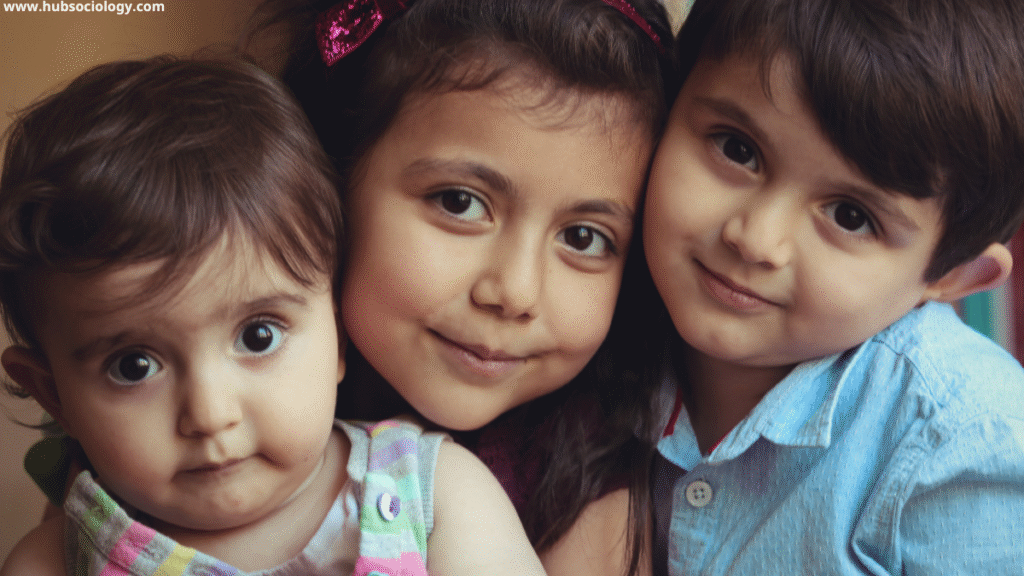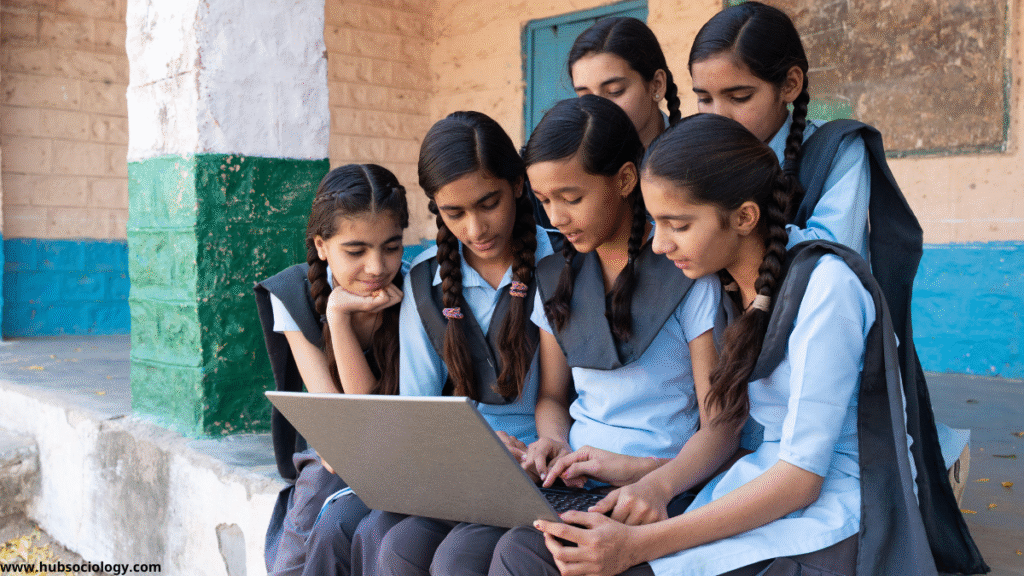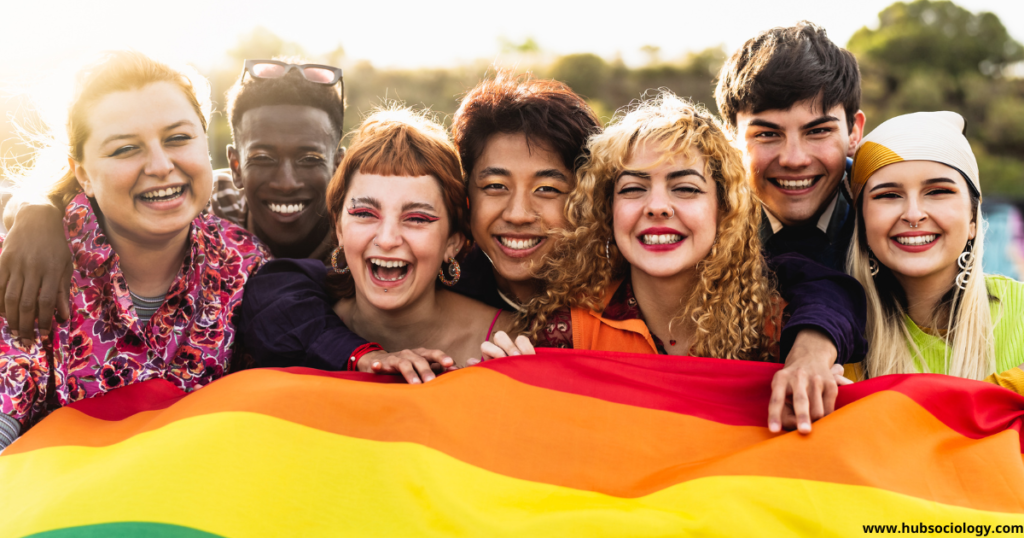Human beings are inherently social. From the family that nurtures a newborn to the online communities that connect strangers across continents, people organize themselves into groups to meet needs, express identities, and shape behaviour. In sociology, the study of social groups is central because groups are the primary units through which norms, values, roles, and social control are produced and reproduced. This article explains the sociological meaning of social groups, outlines major ways to classify them, and examines their functions and contemporary relevance.
What is a social groups?
A social group is a collection of two or more individuals who interact with one another, share a common identity or sense of belonging, and follow shared expectations or norms. Mere aggregation—people standing at the same bus stop—does not automatically constitute a group. A group implies social bonds: recurring interaction, mutual awareness, and some degree of shared purpose or normativity. Classical sociologists such as Charles Horton Cooley emphasized the importance of intimacy and emotional ties in defining groups, while Georg Simmel focused on patterns of interaction given a group’s size and composition.

Key elements of a social group:
- Interaction: Members communicate or otherwise relate to one another.
- Shared identity: Members see themselves (and are often seen by others) as part of the same unit.
- Norms and expectations: Behaviour within the group is guided by explicit or implicit rules.
- Continuity or structure: Groups usually have some persistence over time or at least a recognizable structure (roles, leadership).
Why sociologists study social groups?
Groups are the arena where socialization occurs, where identities are formed, and where collective actions emerge. Understanding groups helps sociologists explain phenomena such as:
- how values and norms are transmitted,
- why people conform or resist,
- how social inequality is maintained or challenged,
- the dynamics of cooperation and conflict,
- formation of collective identity and social movements.
Major ways to classify social groups
Sociologists use several classification schemes to make sense of the diversity of groups. Below are the most widely used types with examples and implications.
1. Primary and Secondary groups
Coined by Charles Horton Cooley, this distinction is foundational.
- Primary groups are small, face-to-face, and emotionally close. They shape the self and basic values—classic examples are the family, close friends, and childhood peer circles. Primary groups are crucial for primary socialization: learning language, basic norms, and emotional patterns.
- Secondary groups are larger, impersonal, and goal-oriented. They are organized around a specific task or interest—examples include workplaces, professional associations, and political parties. Secondary groups often influence behaviour through formal rules and instrumental roles rather than emotional ties.
2. Formal and Informal groups
This classification highlights structure and intentionality.
- Formal groups have an official structure, written rules, and designated roles—schools, corporations, government agencies. Membership is usually defined and entry may be selective.
- Informal groups arise spontaneously, with flexible norms and fluid membership—friendship circles, interest-based gathering at a workplace. Informal groups often exist within formal ones and can be a powerful source of social support or resistance.

3. Membership, Reference, and Associative groups
These categories describe the relationship between the individual and the group.
- Membership groups are those to which an individual belongs (e.g., a trade union, neighborhood association).
- Reference groups are groups individuals use as a frame of reference for evaluating themselves and forming attitudes—celebrities, professional role models, or peer groups. One might not belong to a reference group but still emulate it.
- Associative groups are formed for a specific purpose and often dissolve once the purpose is met, like a study group or a temporary committee.
4. Voluntary and Involuntary groups
Based on the nature of membership:
- Voluntary groups: membership by choice (clubs, NGOs, hobby groups).
- Involuntary groups: membership based on birth or circumstance (family, caste-based groups in traditional societies, ethnic groups).
5. In-groups and Out-groups
William Graham Sumner introduced these terms to explain social belonging and exclusion.
- In-groups are groups with which individuals identify strongly and to which they feel loyalty.
- Out-groups are those seen as “others” or competitors. The distinction helps explain prejudice, competition, and group-based solidarity.
6. Small groups: dyads and triads
Georg Simmel drew attention to how group size shapes interaction.
- Dyad (2 people): most intimate but unstable—if one leaves, the group ends (e.g., a close friendship).
- Triad (3 people): introduces possibilities for coalition, mediation, and role differentiation.
Larger groups add complexity, formalization, and the possibility of subgroups.
7. Modern categories: virtual and transnational groups
With technology and globalization, new forms appear:
- Virtual groups form and operate online—forums, social media communities, and multiplayer gaming guilds.
- Transnational groups connect people across borders around identity, religion, or activism (diasporic associations, international NGOs).

Functions of social groups
Social groups perform multiple essential social functions:
- Socialization: Groups teach norms, roles, values, and language. Family and school are primary agents.
- Identity formation: Groups provide labels, statuses, and narratives that shape self-concept.
- Support and solidarity: Emotional, economic, and practical assistance flows through groups.
- Social control: Groups enforce conformity through sanctions, praise, or exclusion.
- Instrumental action: Groups mobilize to achieve shared goals—from a workplace team completing a project to social movements advocating change.
- Cultural production: Norms, rituals, and cultural practices are generated and transmitted by groups.
Group dynamics and processes
Sociology examines not only what groups are but how they work internally:
- Roles and role conflict: Members occupy roles (e.g., leader, caregiver) that carry expectations. Conflicts arise when roles are incompatible.
- Norms and sanctions: Behaviour is guided by norms; sanctions (positive or negative) maintain conformity.
- Leadership and authority: Groups often designate leaders; leadership styles (authoritarian, democratic, laissez-faire) influence group functioning.
- Cohesion and solidarity: The strength of bonds affects resilience and willingness to cooperate.
- Conformity and deviance: Groups encourage conformity, but also produce innovation when some members deviate and their ideas spread.
Groups and social inequality
Groups are not neutral: they can reproduce or challenge inequalities. Membership boundaries (e.g., caste, class, gendered networks) can restrict access to resources, information, and opportunities. Conversely, groups can be vehicles of empowerment—trade unions, feminist collectives, or community organizations can contest existing power relations.
Contemporary relevance: Social groups in a networked world
The rise of digital platforms and globalization has reshaped grouping:
- Networked individualism: People belong to multiple, partly overlapping groups that are often weak-tie but highly instrumental (professional networks, interest-based online communities).
- Echo chambers and polarization: Online in-groups can amplify conformity and polarize public opinion.
- New solidarities: Global movements (climate activism, transnational labor campaigns) show how groups can mobilize beyond local boundaries.
These shifts call for updated sociological tools: combining classical insights about intimacy and structure with analyses of algorithms, platform design, and transnational linkages.
Practical examples (brief)
- Family (primary, involuntary): Shapes early values and emotional patterns.
- Workplace department (secondary, formal): Task-oriented, governed by rules.
- College peer group (primary/informal): Intense socialization and identity work.
- Political party (secondary/formal): Mobilizes collective action and shapes ideology.
- Online fandom (virtual/reference group): Influences tastes, norms, and consumer behaviour.
Conclusion
Social groups are the building blocks of society. They shape individuals’ identities, govern behaviour through norms and sanctions, and provide the structures through which social change can occur. The typologies—primary vs secondary, formal vs informal, in-group vs out-group, and more—help sociologists and students analyze social life with nuance. In the contemporary era, groups continue to evolve: virtual ties and transnational connections complicate older categories but also reaffirm a basic sociological insight—people make society, and society is made through groups.
Understanding the variety and dynamics of social groups is essential for anyone who seeks to interpret social behaviour, design better institutions, or foster inclusive communities. For students of sociology and readers of HubSociology.com, the study of groups remains an indispensable lens to decipher how private lives intersect with public structures.
Do you like this this Article ? You Can follow as on :-
Facebook – https://www.facebook.com/hubsociology
Whatsapp Channel – https://whatsapp.com/channel/0029Vb6D8vGKWEKpJpu5QP0O
Gmail – hubsociology@gmail.com
Topic Related Questions
5 Marks Questions
(Short answer type – definition, explanation, or listing)
- Define the term social group in sociology.
- Mention any two key characteristics of social groups.
- Distinguish between primary group and secondary group in brief.
- What do you mean by reference group? Give one example.
- Explain the difference between formal and informal groups.
- Who introduced the concepts of in-group and out-group? Explain shortly.
- State any two functions of social groups in society.
- What is the difference between voluntary and involuntary groups?
- Define dyad and triad with suitable examples.
- Give two examples of modern groups in the digital age.
10 Marks Questions
(Medium answer type – descriptive explanation with examples)
- Discuss the meaning and essential features of a social group.
- Explain the distinction between primary and secondary groups with examples.
- What are formal and informal groups? How do they influence individual behaviour?
- Discuss the concepts of membership groups and reference groups in sociology.
- Explain William G. Sumner’s concepts of in-group and out-group with illustrations.
- Examine the role of social groups in the process of socialization.
- Differentiate between voluntary and involuntary groups with examples from Indian society.
- How does group size (dyad, triad, small group) affect social interaction?
- Explain the significance of informal groups within formal organizations.
- Write a short note on virtual groups in the contemporary world.
15 Marks Questions
(Long answer/essay type – critical discussion, sociological analysis)
- Define a social group and critically examine the different types of social groups in sociology.
- Discuss the differences between primary and secondary groups and highlight their significance in modern society.
- Examine the classification of formal and informal groups. How do they function together in institutions?
- Explain the concepts of in-groups and out-groups. How do they contribute to both social solidarity and social conflict?
- Analyze the functions of social groups in shaping personality, identity, and social order.
- “In modern times, virtual groups and transnational groups are transforming social interaction.” Discuss.
- Compare and contrast voluntary vs involuntary groups and membership vs reference groups with suitable sociological examples.
- Discuss the role of social groups in maintaining inequality and promoting social change with examples from India.
- Using the ideas of Cooley and Simmel, explain how group intimacy and group size shape social interaction.
- Evaluate the relevance of different types of social groups in the age of globalization and digital networks.

3 thoughts on “Meaning and Types of Social Groups — A Sociological Perspective”